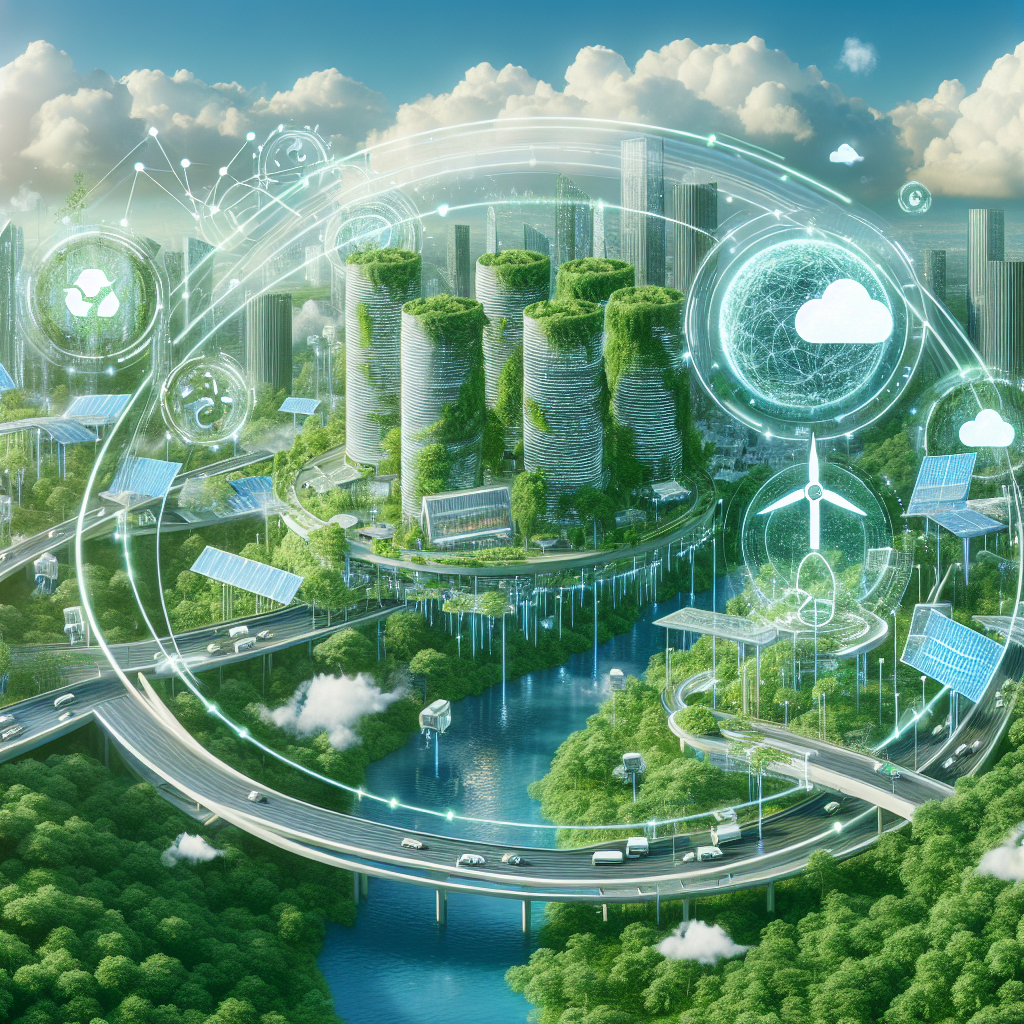The Circular Economy 2.0: AI-enabled Solutions for a Greener Future
Introduction
In recent years, there has been a growing recognition of the need for sustainable practices in order to combat the environmental challenges facing our planet. One concept that has gained traction in the business world is the circular economy, which aims to minimize waste and maximize the use of resources through the reuse, repair, and recycling of products and materials. Now, with the advancements in artificial intelligence (AI) technology, a new wave of innovation is taking the circular economy to new heights.
The Circular Economy 2.0 is the next evolution of sustainable business practices, leveraging AI-enabled solutions to optimize resource utilization, reduce waste, and create a more environmentally friendly future. By harnessing the power of AI, companies can better track and manage their resources, improve the efficiency of their operations, and make data-driven decisions that lead to more sustainable outcomes.
AI-enabled Solutions for a Greener Future
AI has the potential to revolutionize the way we approach sustainability, offering a range of solutions that can help businesses and organizations achieve their environmental goals. Some of the key AI-enabled solutions for a greener future include:
1. Predictive Maintenance: AI can be used to predict when equipment is likely to fail, allowing companies to schedule maintenance proactively and reduce downtime. This not only saves money and resources but also helps to extend the lifespan of equipment, reducing the need for new products and materials.
2. Supply Chain Optimization: AI can analyze vast amounts of data to optimize supply chains, reducing waste and improving efficiency. By identifying inefficiencies and opportunities for improvement, companies can streamline their operations and minimize their environmental impact.
3. Energy Management: AI can help companies to optimize their energy usage, identifying opportunities to reduce consumption and increase efficiency. By analyzing data from sensors and other sources, AI can provide insights that enable companies to make smarter decisions about their energy usage.
4. Waste Management: AI can be used to improve waste management processes, helping companies to track and monitor their waste streams and identify opportunities for recycling and reuse. By optimizing waste management practices, companies can reduce their environmental footprint and contribute to a more sustainable future.
5. Product Design: AI can help companies to design products that are more sustainable, using algorithms to optimize materials and manufacturing processes. By incorporating AI into the design process, companies can create products that are more durable, repairable, and recyclable, reducing waste and promoting a circular economy.
FAQs
Q: What is the circular economy?
A: The circular economy is an economic model that aims to minimize waste and maximize the use of resources through the reuse, repair, and recycling of products and materials. It is based on the principles of sustainability and aims to create a more environmentally friendly and efficient system of production and consumption.
Q: How does AI enable the circular economy?
A: AI enables the circular economy by providing companies with the tools and technologies they need to optimize their resource utilization, reduce waste, and make more sustainable decisions. By harnessing the power of AI, companies can improve the efficiency of their operations, track and manage their resources more effectively, and create products that are more environmentally friendly.
Q: What are some examples of AI-enabled solutions for a greener future?
A: Some examples of AI-enabled solutions for a greener future include predictive maintenance, supply chain optimization, energy management, waste management, and product design. These solutions leverage AI technology to help companies achieve their environmental goals and contribute to a more sustainable future.
Q: How can companies implement AI-enabled solutions for a greener future?
A: Companies can implement AI-enabled solutions for a greener future by investing in AI technology, analyzing their data to identify opportunities for improvement, and collaborating with partners and suppliers to create more sustainable practices. By integrating AI into their operations, companies can reduce waste, optimize resource utilization, and make more environmentally friendly decisions.
Conclusion
The Circular Economy 2.0 represents an exciting new era in sustainable business practices, leveraging AI technology to create a more environmentally friendly and efficient system of production and consumption. By harnessing the power of AI-enabled solutions, companies can optimize their operations, reduce waste, and make more sustainable decisions that benefit both the planet and their bottom line. With the potential for AI to revolutionize the way we approach sustainability, the future looks bright for a greener and more sustainable world.

